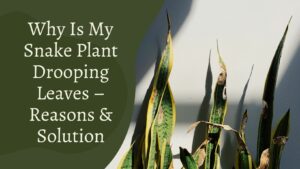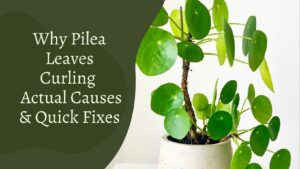
You are probably here because you are wondering how to keep cats out of plants. As cats are naturally interested, anything moving within your home becomes possible prey. It might feel like a sacrificial event to install plants about your home (for the plant). Some cats like digging or worse, defecating in your planter if the leaves or fronds aren’t enough to entice them.
It’s not about you. Despite the aggravation of discovering your beloved plants looking like swiss cheese, your cat isn’t ruining your décor out of spite, which is why it’s critical to first understand why your cat is killing your plants.
1) Keep plant out of reach
Almost without fail, your cat will be enticed to play with your houseplants. Cats are not only hazardous to some houseplants, but cats are also dangerous to the plants. Keeping the plants out of reach is one technique to keep your cats away from them. There are various hanging pots and displays available nowadays that are simple to maintain and out of reach of curious paws. You’ll have to be a little creative with your decorating talents, but it’s doable.
2) Citrus can be used as a deterrent
Citrus is frequently used as a cat repellent since cats have a natural antipathy to citrus. Cats have a highly sensitive sense of smell, and these acidic, fragrant fruits cause them to flee in the other direction.
Simply spritz down the houseplants with a combination of water and the juice from citrus fruits such as lemons, limes, or oranges. Vinegar is also a fantastic cat deterrent, but spraying your plants with vinegar might hurt them, so it’s better to avoid it in this situation.
3) Sprinkle Cayenne Pepper Around the Leaves
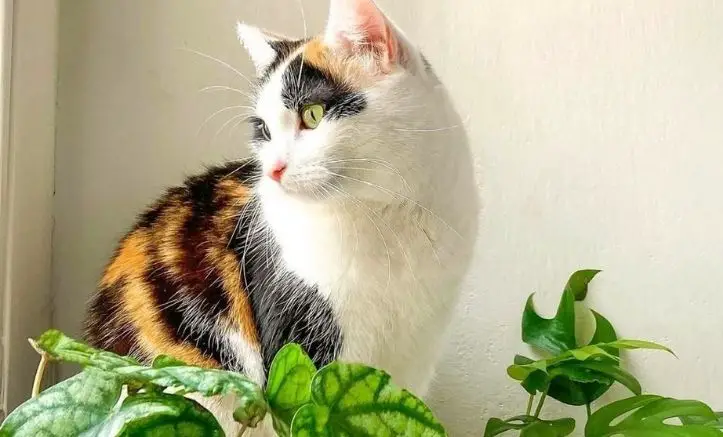
Your cat will have no desire to come into contact with any cayenne pepper. Because they have such a keen sense of smell, they are naturally put off by harsh aromas. Due of the capsaicin in cayenne pepper, which makes it so fiery and hot, it’s used in a lot of commercial cat deterrents. Because cayenne pepper is non-toxic to cats, it is widely used as a deterrent.
If you have a really curious cat who isn’t readily deterred, keep in mind that it might cause discomfort and irritation if swallowed, so you might want to try other options first.
4) Try a spray bottle
Although cats are notoriously difficult to teach, the infamous spray bottle is one option. You’ve probably heard of using a water spray bottle as a deterrent for going on counters or other areas you don’t want them to get on.
Why don’t you try it next time they’re approaching the houseplants? It’s possible that this won’t work for all cats, but it’s worth a go. The main problem with this strategy is that not everyone is home all of the time to spray the cat every time they go to get a plant.
Plus, we’ll confess that it’s not everyone’s favourite method of cat training; some people think it’s cruel. If cats observe you spraying, they may link you with the discomfort, which can have a negative influence on your relationship.
5) Try a cat Grass or Catnip
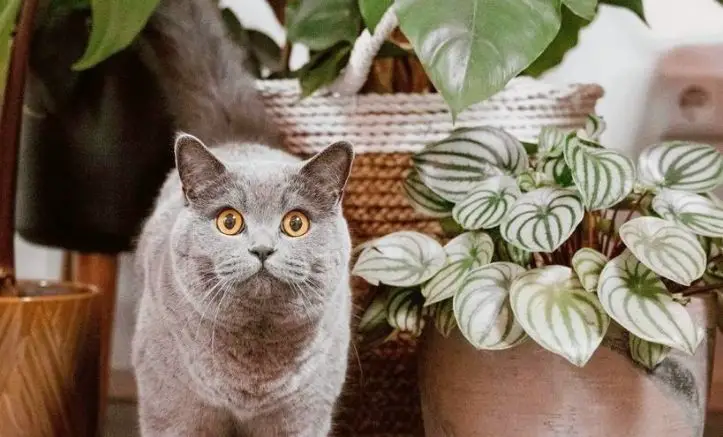
There’s nothing wrong with purchasing your cat his or her own plant, especially if they like houseplants. Putting cat grass or catnip in a pot for your cat is a terrific way to give them the best of both worlds.
Despite the fact that cat grass and catnip are two completely different plants, both are healthy for cats and will give them with enrichment as well as the opportunity to express their natural behaviours. Furthermore, to be completely secure, these plants are also incredibly easy to cultivate, so you won’t have to worry about your lack of a green thumb.
6) Keeps the plant trimmed
Your cat will stay away from your plants if you keep them appropriately manicured. Cats are usually fascinated by long, flowing plants that make excellent play things. They enjoy to bat around the long leaves like wand toys, getting pleasure from the movement. Regularly trimming your plants will assist to keep the stimulation to a minimal.
7) Make Your Own plant Room
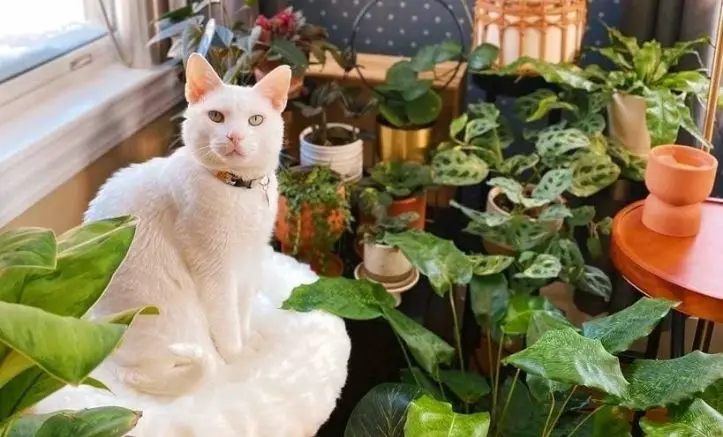
Who wouldn’t desire their own own plant haven at home? Set aside a room dedicated to your plants if you have the space. You may turn it into your own green, tranquil refuge free of feline claws and teeth. Never letting your cat access to your plants is an excellent strategy to keep them away from them. Unfortunately, not everyone will be able to benefit from this, since not everyone will have the extra room in their house to devote just to plants.
8) Choose Fake Plants instead of Real Plants.
Decorate with artificial plants to keep your cats away from the genuine house plants. Many imitation plants on the market are so lifelike that they are difficult to tell apart from genuine plants. Is there any positive news concerning phoney plants? You can’t kill them, so there’s no need for a green thumb or any form of upkeep. Keep in mind that artificial plants will not dissuade all cats. You’ll still get the odd naughty kitten that goes after the false ones. However, they pose a lower risk to your pet’s health than hazardous plants.
9) Homemade spray to keep cats from eating plants:
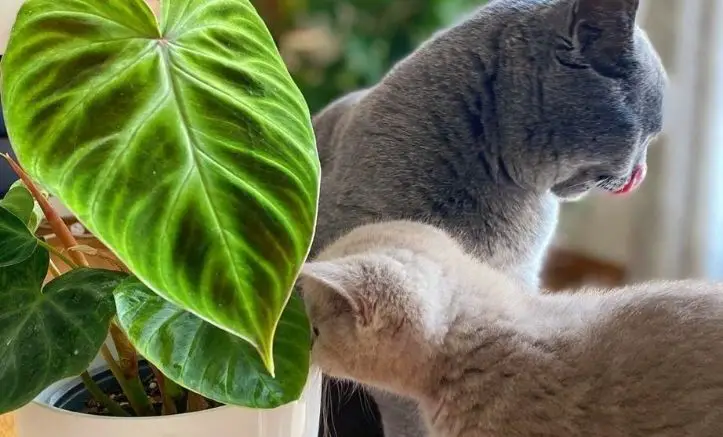
A combination of soap, water, and cayenne pepper. Additionally, the spray may be used to deter cats from devouring plants and bushes, as well as to create a chemical boundary around your garden.
You’ll need some of the smells in concentrated form to combine with water if you want to manufacture your own spray. You’ll also require a spray bottle. I enjoy using essential oils. It makes sense because I already have a bunch because I disperse them throughout my house and utilise them for various wellness purposes.
If you want to go for citrus, you may also utilise juice, such as lemon or orange juice. Essential oils like peppermint oil and olbas oil spring to mind as well. The most crucial thing is that you make a strong-smelling solution and use components that aren’t hazardous to cats or plants. After that, all you have to do is spray it about your plant and wait. You don’t have to wait, but you should keep an eye on how your cat interacts with the plant.
If it’s functioning, it’ll be clear immediately away. Simply keep an eye out for when your cat is courageous enough, or when the fragrance is weak enough, to exact retribution on the plant.
Why do cats dig in potted plants:
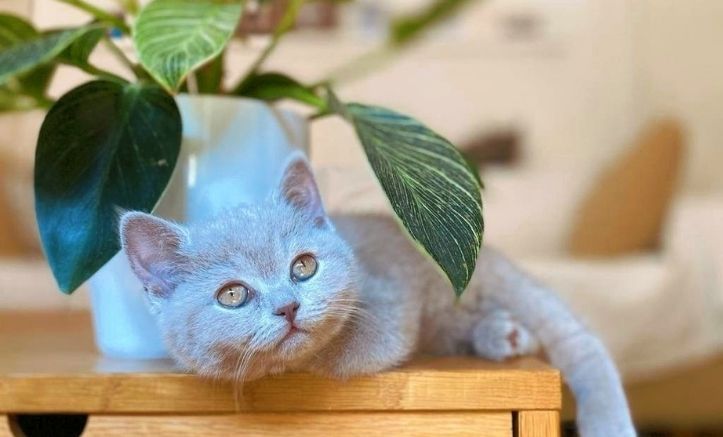
We understand that digging can be a bothersome trait in cats. It’s usually preferable to leave them alone in most circumstances. If your cat digs in their litter box and scatters litter all over the floor, the best thing you can do is put down a mat or spread newspaper on the floor around the litter box to make cleaning up simpler. Attempting to penalise your cat for innate behaviour, particularly when it comes to their potty habits, is unlikely to succeed and will just confuse and disturb your cat.
There are a handful of things you may do if your cat is digging in unsuitable locations, such as your potted plants:
- You may take a spray bottle loaded with water, yell “no!” and give them a short spritz if you catch them in the act. Because most cats dislike water, this is an excellent deterrent.
- Wrap aluminium foil around the base of your plant. While some stubborn cats may try to dig nevertheless, the foil will thwart them most of the time.
- Fill the potted plant with orange peels. Citrus is unpleasant to cats, so this may be a deterrent.
- Cayenne pepper may be sprinkled at the base of your plants. Pepper does not along with cats!
- Spray your plants with orange or lemon oil; it won’t harm them and will likely keep your cat away!
How to keep cats pooping in potted plants:

You can prevent cats from going where you don’t want them to go in two ways.
These are the following:
- By putting fragrances on them that they don’t like
- They don’t like textures, therefore they use them
Cats have a keen sense of smell and, for the most part, are guided by their noses. You may target one or both of these senses since they have to stand on things with their sensitive paws. Here are a few of the more successful methods:
Citrus:
Citrus scents are a tried-and-true home remedy for keeping cats away from a certain place. My neighbour used to throw orange slices in her flowerbeds when I was a kid, and I presume it helped. There are numerous approaches you may take. Essential oils, which are concentrated oils derived from citrus plants and fruits, or raw fruit fragments can be used. Oranges, grapefruits, and limes, for example, can be strewn with peels or bits of citrus fruit. Alternatively, mix a spray with water and citrus and sprinkle it around your plants.
Herbs that are powerful

Some plants have a strong odour that will make cats go the other way. The nicest aspect about utilising herbs is that you can pick ones that smell good to you. The following plants are known to irritate a cat’s nose:
- Lavender
- Rue
- Rosemary
- Mint
- Eucalyptus
Herbs can be used in a variety of ways, once again. If the fragrance is present around your plants, you’ll soon discover whether or not your cat dislikes it.
Spices that are pungent
There are a variety of spices that have a strong aroma. Some of them are overwhelming to humans; imagine how powerful it must be for your cat. Spices that are thought to deter cats include:
- Peppercorns
- Curry
- Mustard
- Pepper cayenne
- Cinnamon
- Turmeric
Spices are effective at both of the ways of cat deterrence discussed in this article. Spice powder may be sprinkled on areas where your cat will have to walk to get to your plants. (It’s also a fantastic technique to keep cats away from your vehicle.)
They’ll end up licking it, which will come as quite a shock to them. Just make sure you’re not being too nasty. A pinch of powder should enough. This method was employed by my father to prevent his neighbor’s cats from entering his greenhouse and pooping, and it worked immediately.
Using Textures Cats Hate
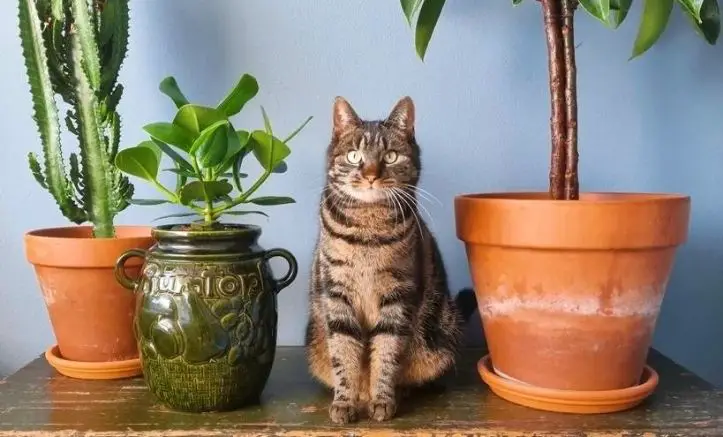
Foil aluminium
This is one of the most typical items I hear people mention when they want to keep cats away. It seems to work for a lot of people, so it’s worth a go. Simply wrap some foil over your plant container or a ledge they’re attempting to access. It should work as long as they have to stand on it to grab the plant. When standing on foil, I’ve seen recordings of cats practically rising into the air. There’s something about the way it feels and sounds that they despise.
Vaseline
Obviously, Vaseline should not be used to cover a huge area. However, creeping about in places where your cat has to stand will make them think twice if you can arrange wisely. They must also remove it from their paws. If they go through mud, this might get nasty, so be prepared to clean up.
Pepper
When I mentioned using spices to keep cats away, I said this. If getting pepper on their paws and licking it off isn’t enough to make them think twice, getting pepper on their paws and licking it off could.
Tape that sticks
I’ve previously used double-sided tape to keep one of my cats from pawing at my window. I simply put a strip up since she kept pawing at the same location and made an unpleasant shrieking noise.
How to keeps cats away from toxic plants:
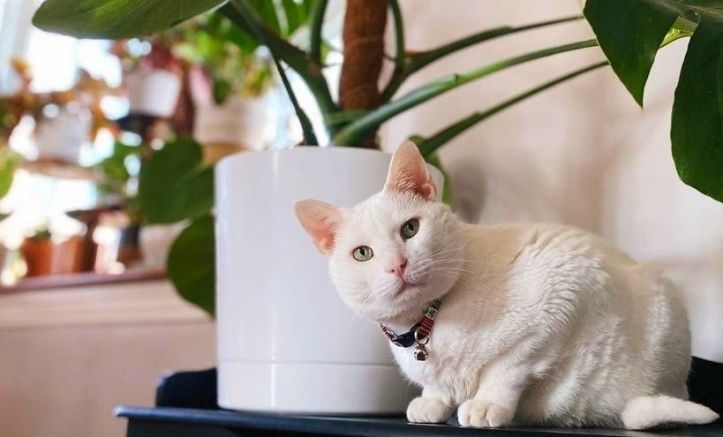
Certain plants are disliked by cats due of their odour. Citrus is a food that cats despise. Due of the fragrance or texture, cats will be less likely to cross or stroll past them.
Apply with a spray bottle after diluting with a little water.
For example, a plant like black henbane may be lethal in little dosages, whilst other plants require a substantial quantity of consumption to have ill effects. Create a separate plant room.
The leaves and seeds of the larkspur plant, on the other hand, are harmful to pets. You do not, however, need to purchase a pre-made mixture. However, you should only use this procedure if you’re working with a low-acid soil.
It will provide a tasty boost to your plants while also deterring cats. It will inform you whether or not the plant is toxic. Keep in mind that toxicity levels fluctuate depending on how close you come into touch with a plant.
You’ll know what to check for if you believe your cat ate a hazardous plant, such as vomiting and excessive drooling. Coffee grounds will not only deter cats from succulents, but they will also refill the soil and provide much-needed nutrients. Give your kitties a better option. It’s true that what’s out of sight is out of mind. Essential oils like peppermint oil and olbas oil spring to mind as well. Sprinkle a handful of them about the garden.
What plants do cats hate:

Daffodils, caladiums, Easter flowers, poinsettias, azaleas, and other plants that are harmful to cats if eaten are among the flora cats despise. You should keep an eye on your cat if you notice it chewing on a plant or licking its lips after eating something it shouldn’t. Bring your pet to a veterinarian if at all feasible so that they may obtain adequate medical treatment if necessary.
Here are a few more examples of plants that cats despise:
- Aloe Vera
- Rubber Tree Plant
- Peace Lily
- English Ivy
- Lilies (tiger, Easter and Japanese Show lilies)
- Lantern Flower
- Grape ivy
- Dieffenbachia
- Mistletoe
- Philodendron
- Ilex
- Oleander
- Hydra
Lemon juice on plants to keep cats away:
Citrus: Cats, like dogs, despise oranges, lemons, limes, and other citrus fruits. These odors are even used in some cat repellents to keep cats away. Essential oils (such as eucalyptus, tea tree, peppermint, and others) should be avoided by cats since they are known to be particularly toxic.
Deodorizer with Lemon Fill a glass spray bottle halfway with hot water and add the lemon juice, baking soda, and lemon oil. To prevent the essential oil from breaking down the plastic, use a glass container. Shake the jar well before labelling it for later use. As needed, spray the deodorizer throughout the room.
Citrus spray for plants to keep away cats:
Citrus odours repel cats, and they will avoid regions where you have lemon or orange peels, which you may scatter throughout your yard. Cat repellant sprays or granules containing the urine of cat predators such as foxes or coyotes are available in garden supply and pet stores.
How Can Cats Stay Out of Flower Beds?
Using cat repellents (both homemade and commercial), spraying stuff they dislike, such as pepper, coffee, and tea leaves, and putting sprinklers are some of the best ways to keep cats away of flower beds (as cats are notorious for avoiding getting wet).
Cat Repellents on the Market
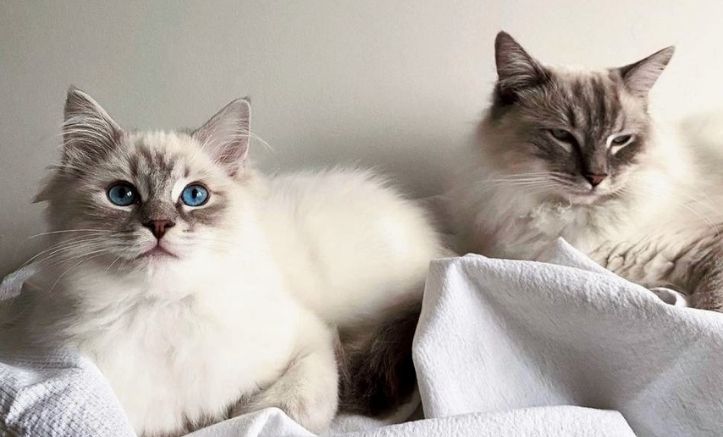
Commercial cat repellents are the first solution on our list for keeping cats out of flower beds. These sprays, oils, and powders are usually made up of a combination of organic components like clove and garlic extracts, or an essential oil like Citronella.
The most popular and effective commercial cat repellents used to keep cats away from specific locations include PetSafe Pawz Away, Nature’s Wisdom, and NaturVet.
Cayan, chilli pepper.
Sprinkleing Cayan pepper or black pepper about the flower beds is an easy way to deter cats from entering them. The strategy works because they will avoid the region for a long time if they receive a scent of the substance.
The most significant disadvantage is that you must reapply the product every time it rains or when it is windy outside (until they get a nose full of it, at least).
Leaves of Tea
Tea’s smell also deters cats from using flower beds as their own personal litter box or scratching post. Simply rip the tea bags open and spread the contents. Set flat stones or landscape tiles throughout the flower beds and place the tea on top of them for best results. It won’t be coated with soil or mulch this way.
Twigs and Pinecones
Another less-known approach for keeping cats out involves strategically spreading pinecones and twigs around your flower beds. In a pinch, old or broken chopsticks, pencils, and toothpicks will suffice.
Cats are naturally finicky creatures. They are methodical in their path-finding and dislike rough terrain. You’re effectively making the flower beds a less comfortable setting for them to wander about in by scattering twigs and pinecones throughout the area.
Nets or Mesh
Another slightly shady alternative is to use mesh or netting to line your flower beds and landscaping. When the cats notice the twigs, pinecones, and toothpicks strewn all over the place, they won’t feel safe going around.
This approach works well with old mesh potato and onion bags. Similarly, old fishing nets can be used. Of course, you could go to a local department shop and get some inexpensive mesh fresh new. Simply put it over the flower beds and secure it with garden pegs.
Hair from a human
The aroma of human hair, believe it or not, is thought to deter cats. Collecting hair from hairbrushes and combs is a quick and easy procedure to utilise whether you have long hair or a spouse and children. Head out to the flower beds once you’ve gathered a good amount of hair and sprinkle it everywhere. It’s better to put it near the boundary, where cats are more likely to come across it as they try to enter the area.
Hedges and fences
The easiest approach isn’t always the best option. In many situations, merely erecting a fence around your flower beds is sufficient to keep cats at far.
Cats are well-known for their laziness. The less effort they have to put forth, the better. Many cats lose interest in the fenced-off area after leaping a fence on a daily basis.
Conclusion:
Even though you don’t always understand why cats do what they do, they make wonderful pets. Having a cat who chews on or toys with your houseplants is one of those peculiar behaviours that may quickly become aggravating. You shouldn’t have to pick between having cats and having plants in your home. There are several options for protecting plants from your stalker kitty.
The majority of the time, your cat’s behaviour has a rational cause that you can address. These are some of the most effective and simple methods for preventing your cat from destroying your garden and flower beds. You may also utilise thorny bushes, build a catio, and make an outside litter box for your cat. Plant a little catnip garden away from your flower beds, along with a small sandy area for your cat to rest in.
We hope that this article has provided you with some insight into your cat’s issues. Give them some time; cats may be stubborn. You can assist them migrate to a different area or, hopefully, out of your yard completely by making them uneasy.

Hi This is Maria, We are a team of gardening enthusiasts with a passion for gardening. We have tried to bring you tips and advice enabling you to grow and maintain a healthy and beautiful garden. We Hope You Find it Useful.



